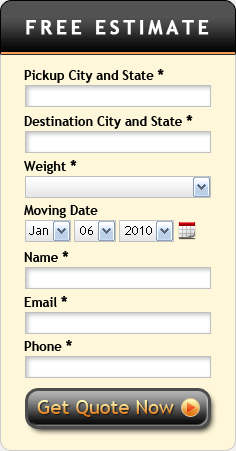
Frequently Asked Questions
Prime Van Lines has been dedicated to delivering stress-free moves for over 20 years, so we'd like to share some of the insights we've gained along the way. Take a few minutes to review some of the FAQ's in this section. If you have further questions regarding an upcoming move, please contact us and we would be happy to answer them.
- When is the best time to move?
- How much notice do you need?
- Are there any "extra" charges?
- What is a tariff?
- What is the estimated delivery time and will the driver notify me?
- When and how do I pay for the moving services?
- What are your forms of payment?
- What sort of equipment do you use?
- Do we need to buy insurance?
- Can I pack my own boxes?
- Can I move food?
- Can I move paint, gas cans or propane tanks?
- Can I move plants?
- Can clothes and other items be left inside the furniture during the move?
- Can you disconnect my appliances and electronics for moving?
When is the best time to move?
Prime Van Lines can move you last minute, at night, on the weekends, even some holidays, whenever it's convenient for you. Please keep in mind though that the summer months are traditionally the busiest season for the moving industry. During this period, rates may be higher because of increased seasonal demand. If you're able to schedule your move between October and April, you will find lower rates and greater availability.
How much notice do you need?
We can reserve your move date up to the day before if there is still truck and crew availability. Of course, the earlier you reserve, you have a better chance to schedule the time slot you require. Your move date can always be changed at no extra cost.
Are there any "extra" charges?
Prime Van Lines does not have any hidden charges; however there are basic potential charges that are applied should they occur during your delivery process.
- Shuttle Service - If our moving vans cannot safely access your residence to load or unload, this is the charge for the use and the extra labor time to transfer your shipment into a smaller vehicle.
- Additional items - Before a driver loads an item on the truck, if you have added items to your original inventory of items going, be prepared for a price adjustment. It makes sense to review the inventory of items on your estimate to make sure that it represents what you plan to move.
- Additional Services - Should you request additional services such as unpacking or extra deliveries, then additional charges will apply.
What is a tariff?
This is the “price list” used by moving companies who provide interstate transportation of household goods and personal effects. Our tariff includes all of the various services and rates offered by Prime Van Lines and is on file with the Interstate Commerce Commission.
What is the estimated delivery time and will the driver notify me?
Approximate transit times are sent to you with each quote. Transit times depend on many factors including the size of your shipment, the distance and the direction your shipment is traveling. Our dispatch office will contact you prior to your shipment leaving our warehouse to confirm your delivery arrangements. Your driver will also call you the day before and provide you with an arrival time for your shipment.
When and how do I pay for the moving services?
Tariff provisions require that all charges be paid before your shipment is unloaded at destination. For interstate moves, a 50% deposit is required at the time of pickup and the balance of invoice is collected at the time of delivery.
What are your forms of payment?
We accept cashiers checks, money orders, cash and most credit cards. Personal Checks are not accepted. In the event that your employer is paying for the move, the employer may pre-arrange to be billed via invoice. Whatever works for you is great. Just be sure to have this all worked out prior to packing and loading. If the method of payment is not established prior to load day, it can cause you problems on delivery day.
What sort of equipment do you use?
We use only fully equipped moving trucks. Each truck contains ample pads, blankets and ties to protect your unwrapped furniture items during transit. We maintain our fleet of trucks in-house, to ensure high performance, gentle transport and superior safety. All of our equipment are designed for the safe handling and security of your possessions, such as side-access vehicles, air-ride suspensions, and curb-side palletization. Plus, we maintain control of your goods from start to finish, rather than passing them to outside carriers.
Do we need to buy insurance ?
This question is difficult to answer as different people have different attitudes and needs towards transit protection. For example, some people insure their homes, and some don't. All moves are protected with Released Value Protection which is minimal coverage meant for low value moves or moves already covered through your home insurance.
Can I pack my own boxes?
Doing your own packing is a great way to reduce the overall cost of moving. But keep in mind that your boxes and packing materials should be sturdy and suitable for transit. Also, be careful not to over-pack or make boxes too heavy to ensure that they do not risk damage. If you plan to do your own packing or partial packing, remember that movers are not liable for damage to items that they have not been responsible for packing.
Can I move food?
It depends. Yes, if you are moving a short distance locally and all dry food containers and jars are properly sealed or taped up. If you are moving interstate, overseas or into storage, food and perishable items cannot be shipped.
Can you move my paint, gas cans, or propane tanks?
No. Movers cannot move hazardous materials including paint, acids, explosives, compressed gases, gasoline, or stains and varnishes
Can I move plants?
This depends again. On interstate or international moves, the answer is no. They don't travel well and are considered prohibited goods. On some local moves, we may be able to move plants with limited liability.
Can you move my paint, gas cans, or propane tanks?
No. Movers cannot move hazardous materials including paint, acids, explosives, compressed gases, gasoline, or stains and varnishes
Can Clothes And Other Items Be Left Inside The Furniture During The Move?
We recommend that all clothes and items be removed from inside the furniture. This includes all desks, dressers, armoires, etc. This makes the furniture much lighter and easier to move. It also limits wear and tear to your furniture during the move. Generally the only items of furniture that can be safely moved with items still in them are sturdy dresser drawers containing very light belongings inside (sweaters, shirts, blouses, lingerie). Be careful NOT to leave fragile items and anything that might spill or leak.







